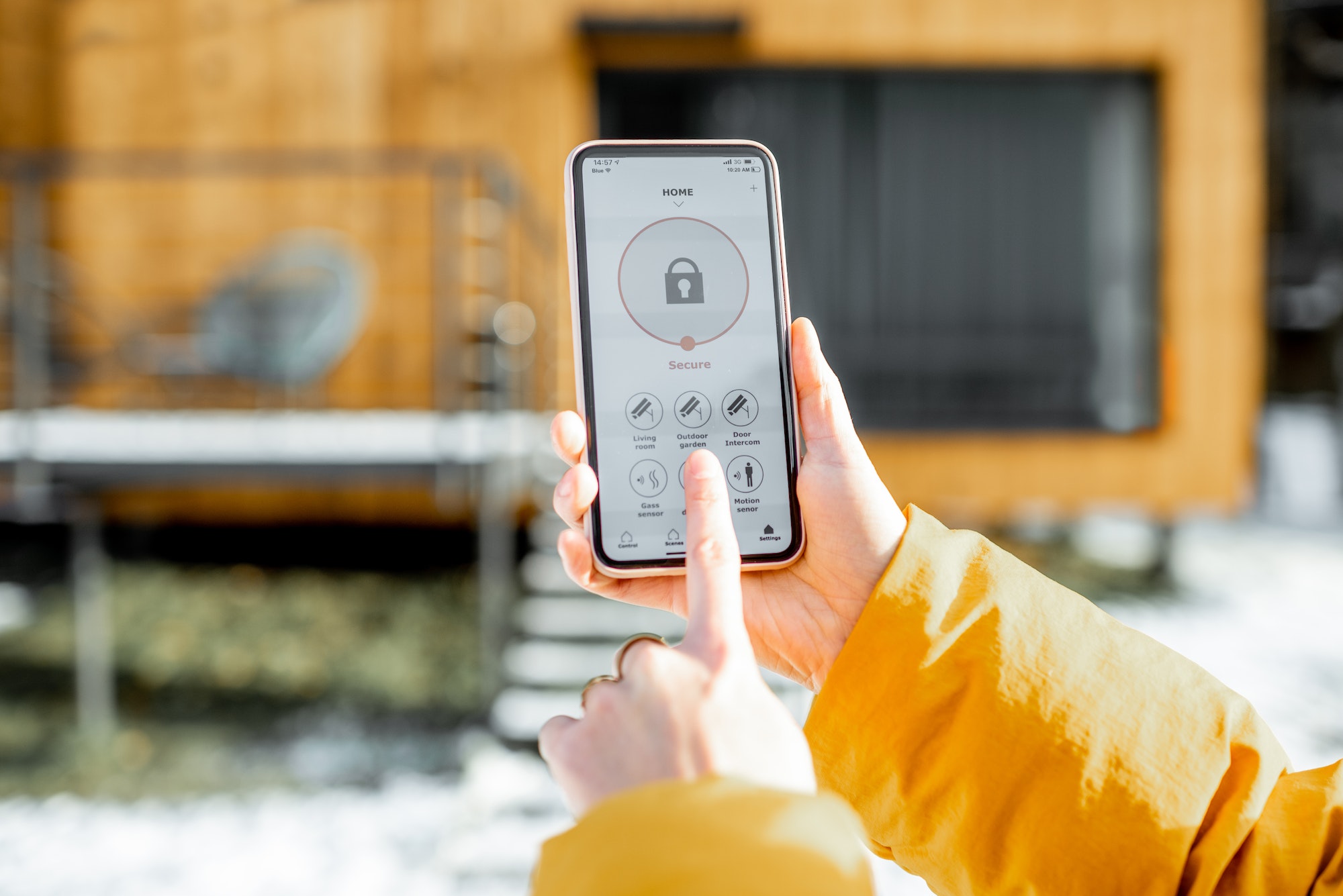As a homeowner, I’ve always been mindful of the importance of safety and security for my family and belongings. That’s why I want to share with you an interesting story about how having a security system for your home is an essential risk management strategy. In fact, according to a study by the University of North Carolina at Charlotte, about 60% of burglars indicated that the presence of a security system influenced their decision to target another home. This demonstrates the effectiveness of security systems as a deterrent to criminal activity.
Home security systems not only protect individual properties but also contribute to creating a safer neighborhood as a whole. By implementing security measures throughout the community, neighbors can work together to deter crime and foster a secure environment that is appealing to potential homebuyers. When multiple homeowners in a neighborhood install security systems, the combined surveillance coverage can create a more comprehensive security network, making the entire neighborhood a less attractive target for criminals. Moreover, a neighborhood with a reputation for safety and security can be a significant selling point for potential homebuyers, resulting in higher property values.
Table of Contents
1. Deter Criminal Activity
A Strong Deterrent to Thieves and Vandals
Home security systems offer various services and tools designed to deter criminal activity. Let’s take a closer look at some of the most popular options and their associated costs.
- Surveillance Cameras: Surveillance cameras are a vital tool in deterring criminal activity, as they capture footage of potential intruders and alert homeowners of suspicious activity. Prices can range from $50 for a basic camera to over $300 for advanced models with high-resolution video, night vision, and motion detection.
- Alarm Systems: Alarm systems use sensors on doors and windows to detect unauthorized entry. If the system is triggered, a loud siren alerts the homeowner and neighbors, and can also notify the monitoring center or authorities. Basic alarm systems can start at around $200, while more sophisticated systems can cost $1,000 or more.
- Monitoring Services: Professional monitoring services provide round-the-clock surveillance of your home. In case of an emergency, the monitoring center contacts the appropriate authorities on your behalf. Monthly fees for these services typically range from $15 to $60, depending on the level of coverage and features included.
- Security Lighting: Outdoor security lighting, such as motion-activated floodlights, can deter potential intruders by illuminating dark areas around your home. Prices for security lighting can vary from $20 for a basic light fixture to $150 or more for advanced, smart-enabled lighting systems.
- Smart Door Locks: Smart door locks can be controlled remotely and offer features like keyless entry and automatic locking, making it more difficult for criminals to gain access. These locks usually cost between $100 and $300, depending on the brand and features.
- Video Doorbells: Video doorbells allow homeowners to see and communicate with visitors at their front door, even when they’re not at home. This added layer of security can deter criminals who may be attempting to gain entry. Prices for video doorbells range from $100 to $250.
- Security Signage: Security signs and stickers can be placed around your property to alert potential intruders that your home is protected by a security system. This can be an effective deterrent, as criminals are more likely to target homes without visible security measures. Security signs and stickers are generally inexpensive, with prices starting as low as $5.
When selecting the right tools and services to deter criminal activity, it’s crucial to consider your specific needs and budget. By investing in a combination of these options, you can create a robust security system that effectively deters criminals and keeps your home safe.
2. Protect Your Valuables
Safeguard Your Hard-Earned Possessions
Protecting your valuables is a key reason for installing a home security system.
- Prioritize High-Value Items: Focus on securing high-value items such as jewelry, electronics, and important documents. Place these valuables in a secure location within your home, like a safe or a locked cabinet.
- Safeguard Sentimental Items: Family heirlooms, photo albums, and other sentimental items can be irreplaceable. Ensure their protection by keeping them in a secure location and considering additional security measures like alarms or cameras.
- Secure Vehicles and Outdoor Equipment: Garages and sheds often contain valuable items like bicycles, lawnmowers, or vehicles. Install sturdy locks and consider adding security cameras or motion-sensor lights to deter theft.
- Protect Personal Information: Identity theft can be a significant risk. Safeguard your personal information by storing sensitive documents, like passports and social security cards, in a secure location.
Here are some examples of valuables you should protect:
- Jewelry and watches
- Electronics, such as laptops, tablets, and smartphones
- Artwork and collectibles
- Important documents, like passports, birth certificates, and tax records
- Family heirlooms and sentimental items
- Vehicles and outdoor equipment
Tips to safeguard your valuables:
- Use a Safe: Invest in a high-quality safe to store your most valuable items. Look for a safe with fire and water protection, as well as a secure locking mechanism.
- Maintain an Inventory: Keep a detailed inventory of your valuables, including photographs and serial numbers, to help identify and recover your items in case of theft or damage.
- Install Security Cameras: Place security cameras in strategic locations to cover your home’s entry points and areas where valuables are stored.
- Implement Smart Locks: Upgrade to smart locks for added security and control, as they allow you to monitor and manage access to your home remotely.
- Opt for Offsite Storage: For extremely valuable or irreplaceable items, consider offsite storage in a safe deposit box or a secure storage facility.
- Keep Valuables Out of Sight: Avoid displaying valuable items in plain view of windows and doors, as this can attract the attention of potential burglars.
By prioritizing the protection of your valuables and implementing the tips mentioned above, you can effectively minimize the risk of theft or damage to your prized possessions.
3. Monitor Your Home Remotely
Keep an Eye on Your Property, Anytime, Anywhere
Monitoring your home remotely is a valuable feature of modern home security systems.
- Professional Alarm Monitoring: Professional alarm monitoring services provide 24/7 surveillance of your home, alerting you and the authorities if any alarms are triggered. Monthly fees for these services usually range from $15 to $60.
- Remote Video Surveillance: Some security companies offer remote video surveillance services, where a team of professionals monitors live video feeds from your home’s security cameras. This service can provide added peace of mind and faster response times. Prices vary depending on the level of service and the number of cameras monitored.
- Smart Home Security Providers: Many smart home security providers offer comprehensive solutions that include remote monitoring capabilities. These systems often integrate with other smart home devices, like smart locks and lighting, allowing you to control your entire home remotely. Prices for these services depend on the equipment and monitoring plans chosen.
Requirements for remote home monitoring:
- Internet Connection: A stable internet connection is essential for remote monitoring, as most smart security devices rely on Wi-Fi to transmit data and alerts.
- Smartphone or Tablet: You’ll need a compatible smartphone or tablet to access your security system’s app and receive notifications.
- Security System Subscription: Some remote monitoring features may require a subscription to a security system provider or monitoring service.
Prices for remote home monitoring services:
- Professional Alarm Monitoring: $15 to $60 per month
- Remote Video Surveillance: Prices vary by provider and level of service
- Smart Home Security Providers: Prices depend on equipment and monitoring plans
By choosing the best services for your needs and meeting the necessary requirements, you can effectively monitor your home remotely and enjoy the peace of mind that comes with knowing your property and loved ones are safe, no matter where you are.
4. Lower Home Insurance Premiums
Save Money on Insurance Costs
Installing a home security system can lead to lower home insurance premiums, as insurance companies recognize that a well-protected home is less likely to experience theft or damage. Here, we’ll discuss the factors that can influence your insurance premiums and provide tips to help you save on insurance costs.
Factors that can affect home insurance premiums:
- Type of Security System: The type of security system you install can impact your insurance premiums. Comprehensive systems with professional monitoring, cameras, and alarms are more likely to result in significant discounts compared to basic systems.
- Level of Monitoring: Professional monitoring services can lead to more significant savings on your insurance premiums, as they provide around-the-clock surveillance and immediate response in case of an emergency.
- Smart Home Features: Some insurance companies offer discounts for homes with smart features, like smart locks, smoke detectors, and water leak sensors, as they can minimize potential risks and damages.
- Local Crime Rates: The crime rate in your area can influence your insurance premiums. If you live in an area with high crime rates, installing a security system can have a more significant impact on your insurance costs.
- Claims History: Your insurance claims history can also affect your premiums. If you have a history of filing claims related to theft or property damage, a security system may help lower your future insurance costs.
Tips to lower home insurance premiums:
- Invest in a Comprehensive Security System: Choose a security system with features like professional monitoring, cameras, and alarms to maximize potential discounts on your insurance premiums.
- Upgrade to Smart Home Features: Add smart home features, such as smart locks, smoke detectors, and water leak sensors, to your security system to further reduce your insurance costs.
- Maintain Your Security System: Regularly test and maintain your security system to ensure it’s functioning correctly. Insurance companies may require proof of proper maintenance to provide discounts.
- Shop Around for Insurance: Compare quotes from different insurance providers to find the best rates and discounts available for homes with security systems.
- Bundle Policies: Consider bundling your home insurance with other policies, like auto insurance, from the same provider. This can lead to additional discounts and savings.
5. Improve Emergency Response Times
Get Help Faster in a Crisis
A home security system can help improve emergency response times by quickly detecting potential threats and alerting the appropriate authorities.
- Professional Monitoring: Invest in a professionally monitored security system. Monitoring centers are staffed 24/7 and can quickly contact emergency services on your behalf if an alarm is triggered, ensuring a fast response.
- Smart Smoke and Carbon Monoxide Detectors: Upgrade to smart smoke and carbon monoxide detectors, which can send alerts to your smartphone and monitoring center in case of an emergency, speeding up the response time.
- Panic Buttons: Install panic buttons in strategic locations throughout your home. In case of an emergency, you can press the button to instantly alert your monitoring center and summon help.
- Location-Based Alerts: Use a home security system with location-based alerts, which can notify you of an emergency in your area, like severe weather or a nearby fire, allowing you to react quickly and seek shelter if needed.
- Two-Way Communication: Choose a security system with two-way communication capabilities, enabling you to speak directly with the monitoring center during an emergency. This feature can help relay important information and expedite the response process.
- Visible Security Signage: Place security signs and stickers around your property to alert first responders that your home is protected by a security system. This can help them quickly identify your property and prioritize their response.
- Regular System Maintenance: Perform regular maintenance on your security system to ensure it’s functioning correctly. A well-maintained system is more likely to detect emergencies accurately and promptly.
- Keep Contact Information Updated: Make sure your security system provider has your most up-to-date contact information, so they can quickly reach you or your emergency contacts in case of an alarm.
- Collaborate with Neighbors: Establish a network with your neighbors to keep an eye on each other’s homes and report any suspicious activity or emergencies. A strong community can help improve overall response times.
6. Increase Property Value
Boost Your Home’s Resale Value
Another aspect of home security systems that can boost the resale value of your property is their ability to promote a stronger sense of community and integrate with neighborhood watch initiatives. Here are some ways that home security systems can contribute to a safer and more connected community, making your property even more appealing to potential buyers:
- Increased Community Awareness: Home security systems can encourage homeowners to be more vigilant and aware of their surroundings. This increased awareness can lead to the reporting of suspicious activities, contributing to a safer community overall.
- Shared Surveillance: Some homeowners choose to share access to their security cameras with trusted neighbors or a neighborhood watch group. This cooperative approach allows for broader surveillance coverage and can help deter criminal activity in the area.
- Crime Prevention through Environmental Design (CPTED): Home security systems are a part of the CPTED strategy, which focuses on the design and use of the built environment to reduce crime. A neighborhood with several homes featuring security systems can create a safer environment for all residents, as criminals are more likely to avoid areas with visible security measures.
- Neighborhood Communication: Home security systems can foster better communication among neighbors. For example, if a security system detects suspicious activity, the homeowner can alert their neighbors and work together to address the issue, strengthening the sense of community and cooperation.
- Reduced Police Response Times: In areas where multiple homes are equipped with security systems and connected with neighborhood watch programs, police response times may be reduced. Law enforcement can prioritize areas with higher security measures and proactive communities, leading to a safer neighborhood overall.
- Positive Perception: A well-secured neighborhood is perceived as a safer and more
desirable place to live. This positive perception can help increase property values and
make the area more attractive to potential buyers. When you install the laminate
worktops which match your home and kitchen the value of your home increases.
7. Foster a Safe Neighborhood
Create a Safer Community for Everyone
Home security systems not only protect individual properties but can also contribute to creating a safer neighborhood as a whole. By implementing security measures throughout the community, neighbors can work together to deter crime and foster a secure environment that is appealing to potential homebuyers.
Neighborhood Watch Programs and Security Systems
One way to foster a safe neighborhood is by establishing or participating in a neighborhood watch program. Combining the efforts of a neighborhood watch with the use of home security systems can be particularly effective in deterring crime and promoting safety. Neighbors can collaborate and share information about suspicious activities detected by their security systems, enabling the community to respond proactively and protect each other.
Increased Surveillance Coverage
When multiple homeowners in a neighborhood install security systems, the combined surveillance coverage can create a more comprehensive security network. Criminals are less likely to target an area with extensive security measures in place, as the risk of being caught increases. This collective approach to security can make the entire neighborhood a less attractive target for criminals.
Building Trust and Cooperation
Home security systems can help foster trust and cooperation among neighbors. By working together to maintain a safe environment, neighbors can develop stronger bonds and a sense of camaraderie. This collaborative approach to safety can lead to more open communication and a willingness to help one another, further enhancing the sense of security in the neighborhood.
Community Involvement and Awareness
A neighborhood where residents prioritize safety and invest in home security systems can encourage greater community involvement and awareness. By actively participating in local safety initiatives, attending neighborhood meetings, and communicating with local law enforcement, residents can demonstrate their commitment to fostering a safe and secure community. This level of engagement can help build a positive reputation for the neighborhood and contribute to higher property values.
Promoting a Safe and Secure Image
A neighborhood with a reputation for safety and security can be a significant selling point for potential homebuyers. When multiple homes in an area feature visible security measures, such as security cameras and alarm system signage, it sends a strong message that the community prioritizes safety. This perception can make the neighborhood more attractive to buyers and result in higher property values.
Pro Tips
- Regularly test your security system to ensure it’s functioning correctly.
- Update your security system’s software and firmware to keep it protected from cyber threats.
- Consider adding smart home features to your security system for an extra layer of convenience and control.
FAQs
Q: How much does a home security system cost?
A: Home security systems can vary greatly in price, depending on the features and level of monitoring. Research different options and choose one that fits your budget and needs.
Q: Are home security systems difficult to install?
A: Some security systems can be easily installed by the homeowner, while others may require professional installation. Look for a system that suits your comfort level and expertise when it comes to installation.
Q: Do I need to sign a contract for a home security system?
A: Some security providers require a contract, while others offer month-to-month services. Consider your long-term plans and preferences when deciding on a contract.
Q: Can I integrate my home security system with smart home devices?
A: Yes, many modern home security systems are designed to work seamlessly with smart home devices, like smart locks and smart lighting. This integration can provide additional convenience and control over your home’s safety.
In conclusion, it’s clear that having a security system for your home is a smart risk management strategy. From deterring criminal activity to saving money on insurance premiums, the benefits are numerous. Not only will you be protecting your family and valuables, but you’ll also be contributing to a safer community for everyone. So, invest in a home security system today and enjoy the peace of mind it brings!




